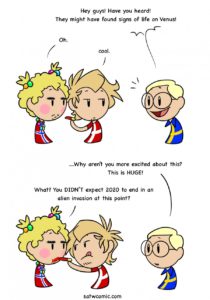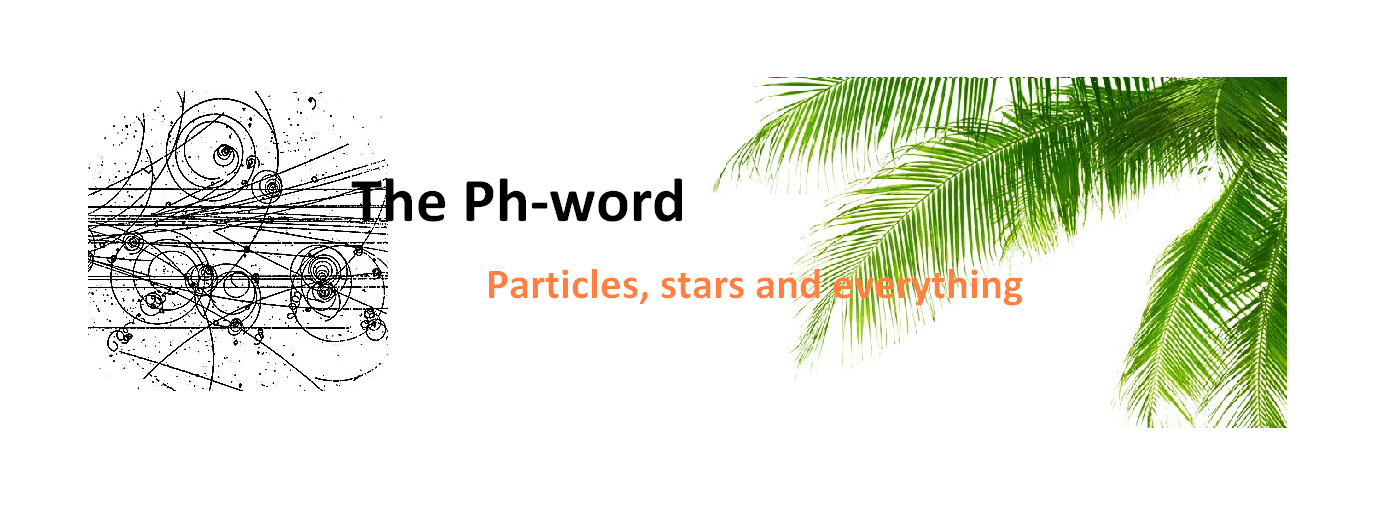September didn’t disappoint: even more water was found on Mars and possible signs of life were found on Venus!

Running deep
Two years ago an underground lake was detected under the martian surface. Now, the team of researchers that found it announced the presence of three more such lakes close to the martian south pole and close to the first one.
The team used a radar aboard ESA’s Mars Express, an orbiter which has been circling the famously red planet for seventeen years now. As the radar waves pass from one material to the other under the surface, they get reflected; their reflection is then compared to that from various geological formations on Earth. Which led to finding these four large objects whose reflections make them look a lot like liquid water.
Even if humans reach Mars and drill 1.5 kilometers under the surface of its south pole, they can’t use this water for much as it must be very heavy in salt to stay liquid in the local low temperatures. (But still, we are sure someone will find ways to wrap and sell it to others.)
Living in the clouds
Now about the possible discovery of the year. What was discovered exactly is small quantities of the substance phosphine in Venus’ atmosphere. The chemicals in the atmospheres of planets and even in stars can be detected from the “comfort” of Earth through spectroscopy: atoms and molecules absorb some light and by doing so they create specific dark lines in the spectrum of light that telescopes see. In this way the presence of phosphine was discovered by astronomers in Cardiff University and their collaborators using two different observatories.
Phosphine is very difficult to make unless one is an organism and, even better, a microorganism. On Earth at least, it is created by humans in factories (needing very high temperatures and energies) and by bacteria in many places (stomachs, swamps, sewage). There are no natural processes that don’t involve life that can create it. And incidentally, yes, it seems that Venus must not be smelling that great.
After the finding the team did an exhaustive study and made sure that the phosphine probably can’t have been produced by things like lightning, volcanoes (Venus has many) or even be brought in by meteorites. All in all, whatever it comes from it’s through activity unknown to us…
What we do know so far is that the concentrations of phosphine were found inside clouds at a height of 55 kilometers. Clouds might not sound like much, but venusian clouds are a lot thicker and more stable than terrestrial ones (plus venusian ground sucks and it’s improbable that it hosts life). So it can be thinkable that biological processes might happen in those particular clouds. However, this is not the only possibility, as phosphine could be created elsewhere and just concentrate at that altitude during the circulation of the atmosphere.
Eventually, what astronomers would like to have is someone go and measure the atmosphere on Venus itself, and preferably at various points and heights, in order to tell where phosphine is created. That would be a good first step for understanding how it is created as well.
But could such a measurement happen?
Venus was quite explored by spacecrafts since the ‘60s and up to the ‘90s. After that more distant planets became trendier, so currently there is no craft orbiting Venus and there are no plans for doing so in the next years… But then, in an uncharacteristic strike of luck, a spacecraft will happen to pass by Venus this month!
This will be BepiColombo, sent by ESA and JAXA, the european and japanese space agencies, to explore Mercury. In order to reach Mercury it will use Venus’ gravity to propel it and it’ll do so twice, first this month and then next summer.
This month BepiColombo will not pass really close by Venus, but next summer it will be at an okayish distance of 500 kilometers from it, and it does carry appropriate instruments. So the side hustle will probably be worth a try.
PS: If you’d like to read a bit more about the possibility of life in the venusian clouds I recommend this older article. It can’t go wrong when it starts with the sentence “after a full day of conference talks Carl Sagan and three fellow scientists did what most people do at the end of a conference. They met up at the hotel bar for dinner and drinks”.
